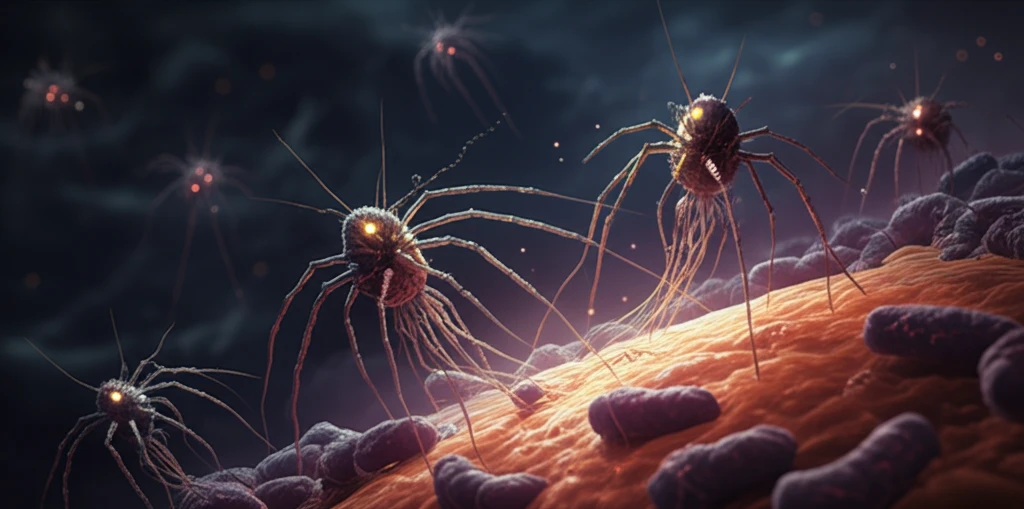
Bacteriophages: Nature's Tiny Warriors Against Antibiotic-Resistant Superbugs
"Could phage therapy offer a new hope in the fight against deadly infections?"
In a world where antibiotic resistance is rapidly increasing, leading to infections that are difficult, if not impossible, to treat with conventional medications, scientists are looking towards nature for answers. Among the most promising solutions are bacteriophages, often called phages—viruses that specifically target and destroy bacteria. These natural enemies of bacteria could revolutionize how we approach and combat bacterial infections.
Antibiotic resistance occurs when bacteria evolve to withstand the effects of antibiotics, drugs designed to kill or inhibit their growth. This resistance arises through various mechanisms, including genetic mutations, horizontal gene transfer (bacteria sharing genetic material), and selective pressure from the overuse of antibiotics. The consequences are dire: longer hospital stays, higher medical costs, and increased mortality rates. Infections like methicillin-resistant Staphylococcus aureus (MRSA), carbapenem-resistant Enterobacteriaceae (CRE), and extensively drug-resistant Acinetobacter baumannii (XDRAB) are becoming more prevalent, posing a significant threat to public health.
Phage therapy is emerging as a potential game-changer in the fight against antibiotic resistance, offering a highly specific and adaptable approach to targeting bacterial infections. Unlike broad-spectrum antibiotics that can harm beneficial bacteria and contribute to resistance, phages target only specific bacterial strains, minimizing disruption to the body's natural microbiome. This precision is particularly important in treating chronic infections and preventing the spread of resistance genes.
What are Bacteriophages and How Do They Work?

Bacteriophages are viruses that infect and replicate within bacteria. They are the most abundant biological entities on Earth, found in virtually every environment where bacteria exist, including soil, water, and even the human gut. Phages are highly specific, typically infecting only one or a few closely related bacterial strains. This specificity is determined by the phage's ability to recognize and bind to specific receptors on the surface of the bacterial cell.
- Attachment: The phage attaches to the bacterial cell surface via specific receptors.
- Injection: The phage injects its genetic material (DNA or RNA) into the bacterium.
- Replication: The phage's genetic material hijacks the bacterial cell's machinery to produce new phage particles.
- Assembly: New phage particles are assembled within the bacterial cell.
- Lysis: The bacterial cell bursts (lyses), releasing the newly formed phages, which can then infect other bacteria.
The Future of Phage Therapy: Challenges and Opportunities
Phage therapy represents a promising frontier in the battle against antibiotic-resistant infections. Its precision, adaptability, and natural origin make it an attractive alternative to traditional antibiotics. As research continues and regulatory pathways become clearer, phage therapy could become an increasingly important tool in our arsenal against the growing threat of superbugs, offering new hope for patients facing life-threatening infections.
